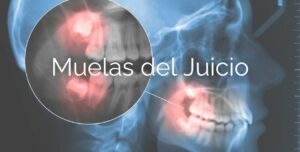¿Por qué me duele el diente en el que estoy recibiendo un tratamiento endodóncico? ¿Por qué me sigue doliendo un diente que tengo endodonciado? Algunos pacientes se hacen estas preguntas, ya que presentan dolor durante o posteriormente al recibir un tratamiento de conductos en alguna pieza dental. Hay varios motivos por lo que esto puede ocurrir.
Al realizar una endodoncia, lo que se intenta conseguir es la eliminación total del tejido pulpar de una pieza dental, eso son los vasos sanguíneos y nervios que contiene en su interior, así como rellenar y sellar completamente el espacio que queda tras instrumentar el espacio en el que se encontraba la pulpa dentaria.
Si la pieza dental no se limpia adecuadamente, puede ocasionar infección que cursara con dolor y/o inflamación. En ocasiones no se consigue desinfectar correctamente el interior por cuestiones anatómicas, tales como curvaturas muy acentuadas o calcificaciones. Así mismo si no se sella correctamente se dejaran espacios fácilmente colonizables por bacterias. Esta situación siempre se puede intentar remediar realizando una reendodoncia, que consiste en eliminar el material con el que se ha rellenado el conducto y tratar de mejorar el tratamiento anterior realizando una exhaustiva limpiezas y desinfección. A veces también puede ser que la pieza tenga ya una infección previa y severa por lo que hará falta más de una sesión de desinfección para limpiar bien los conductos y en esos casos puede haber dolor y habrá que recetar tratamiento antibiótico.
Es posible que se produzca una inflamación del tejido periapical tras la endodoncia. Esta inflamación puede estar producida por que parte del material de sellado se haya extruido o por sobre instrumentación durante el procedimiento. La inflamación suele remitir si se le da el tiempo suficiente. Otra causa de dolor tras el tratamiento es que se haya dejado el empaste demasiado alto y el paciente al morder, si tener comida en la boca, el diente que ha recibido el tratamiento le duela. Esto tiene rápida y fácil solución, simplemente con ajustar la altura del mismo. Las piezas que han recibido un tratamiento de conductos deben de ser liberadas de una fuerza excesiva al morder.
En algunas ocasiones es la presencia de fisuras o fracturas las causantes del dolor. Estas se producen pues un diente endodonciado, es mucho mas susceptible a la rotura que uno vital, debido a la ausencia de aporte sanguíneo. La forma de evitar estas roturas es restaurando la pieza adecuadamente con una corona o funda después de realizarle el tratamiento endodóncico.
Cuando se realiza una endodoncia aún existen terminaciones nerviosas a nivel externo de la raíz, las cuales pueden provocar una sensación de dolor ante estímulos térmicos de frio o calor, o a la percusión, pero al terminar el tratamiento todos los síntomas desaparecen. Hay que tener en cuenta que no solo el nervio es el que puede producir dolor, pues la pieza dental se encuentra rodeada de otras estructuras, como la encía o el ligamento periodontal que pueden también provocar molestias.
También es posible, pero no es muy común, que exista un dolor en “un nervio fantasma”. Este dolor aparece después de haber recibido un tratamiento endodóncico y puede seguir existiendo incluso después de remover la pieza dental.
Why does the tooth in which I am receiving a root canal treatment hurt? Why does a tooth that I have got a root canal still hurt me? Some patients ask these questions, as they have pain during or after receiving a root canal on a tooth. There are several reasons for which this can occur.
When performing a root canal, which is the complete removal of the pulp tissue of a tooth, (which are blood vessels and nerves contained therein) and completely fill and seal the space remaining, implementing the space where the dental pulp was.
If the tooth is not properly cleaned, it can cause infection coursing through pain and/or inflammation. Sometimes the inside of the root canals doesn´t get properly sanitize because of the anatomy of the tooth, such as very pronounced curves or calcifications issues. Also, if it is not sealed properly, the spaces left can be easily colonized by bacteria. This situation can always be solved by to do a retreatment, which consists in removing the material from which the tube is filled with and try to improve the previous treatment. Sometimes it may also be that the piece already has a severe infection, which it will take more than one session of disinfection to get thoroughly clean the canals and in such case there may antibiotic prescribe.
It is possible that after a root canal the periapical tissues inflammates. This inflammation may be due to extruded sealer or an over instrumentation during the endodontic procedure. The inflammation usually resolves by itself, given enough time. Another cause of pain after the treatment is a high bite, if the patient bites down, with no food in their mouth and their canalled tooth hurts, then the bite should be adjusted. This can easily be corrected, adjusting the bite. Teeth undergoing root canals should not be in a heavy occlusion.
Sometimes are cracks or fractures the ones that are causing pain. These occur because an endodontic tooth, it is much more susceptible to break than one that is vital, due to lack of blood supply. The way to avoid these breaks is restoring the tooth properly, providing the tooth with a crown piece on it after the root canal.
When a root canal treatment is done, there are still externally nerve root endings, which can cause a sensation of pain to thermal stimuli, cold, heat, or tapping, but after the treatment is completely finished, all symptoms must disappear. Keep in mind that not only the nerves that can cause pain, as the tooth is surrounded by other structures, such as gum or periodontal ligament that can also cause discomfort.
It is also possible, but not very common, pain due to a sensitization of a nerve ganglion. We have all heard of «phantom limb pain” this is a similar phenomenon. This pain appears after receiving endodontic treatment and can continue even after the offending tooth is removed.




